These
monasteries have been erected by the Serbian medieval kings who used to
give their crown and state to their sons and then they would retire to
their endowments devoting themselves to the faith and art. Along with
the photograph you can read few lines about these magnificent buildings.
Studenica
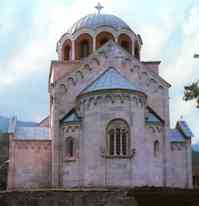
Monastery
of Studenica was erected by Stefan Nemanja at the end of 12th century.
It is built in the style of Byzantium architecture. This monastery
presents a magnificent unity of sculptural effects and architectural
skill and it is protected by UNESCO.
Zica
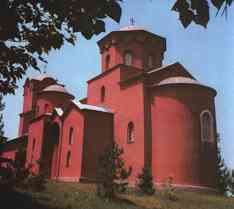
Stefan
the First Crowned erected Zica monastery in 1208 as his endowment and it
became Serbian archiepiscopal centre. It was painted in red like
churches on Athos. During the past centuries Zica was badly damaged and
the last reconstruction was back in 1928.
Mileseva
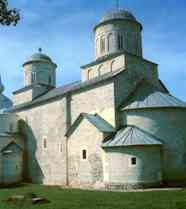
Located
near Prijepolje and built in 1219, Mileseva had very important role in
the Serbian history. St. Sava's body was brought there and books were
printed as well. The master-piece of Serbian medieval painting,
"The White Angel" can be seen in Mileseva.
Sopocani
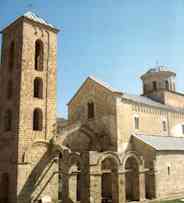
Uros
I erected it in 1263 as his family's mausoleum. Sopocani were badly
damaged in 1389 by the Turks and again in 1689. It was repaired in 1926
and soon UNESCO got it on its list.
Gracanica
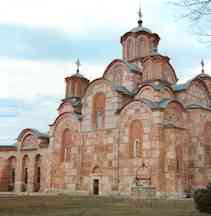
This
monastery was built on the grounds of an earlier building back in 1315.
This master-piece of Byzantum style has a lavish interior decorated with
frescoes. For a short time Gracanica even had its own printing press.
Decani
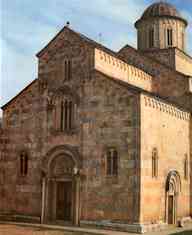
Uros
III invited a catholic architect for Decani, also called "High
Decani" and it is a unique combination of eastern and western
church style. A monumental family tree of Royal Frescoe of the Nemanjics
family tree can be seen in this most preserved monastery of medieval
Serbia.
Chilandar

First
mentioned in 1076, Chilandar was enlarged by Stefan Nemanja in 1198.
King Milutin modified it in 1303 and Prince Lazar followed this example
in 1389. Chilandar has the greatest collection of Serbian medieval
books, documents and manuscripts. Women are not allowed to cross the
gates of this monastery and men must ask for a special permission.

|
![]()